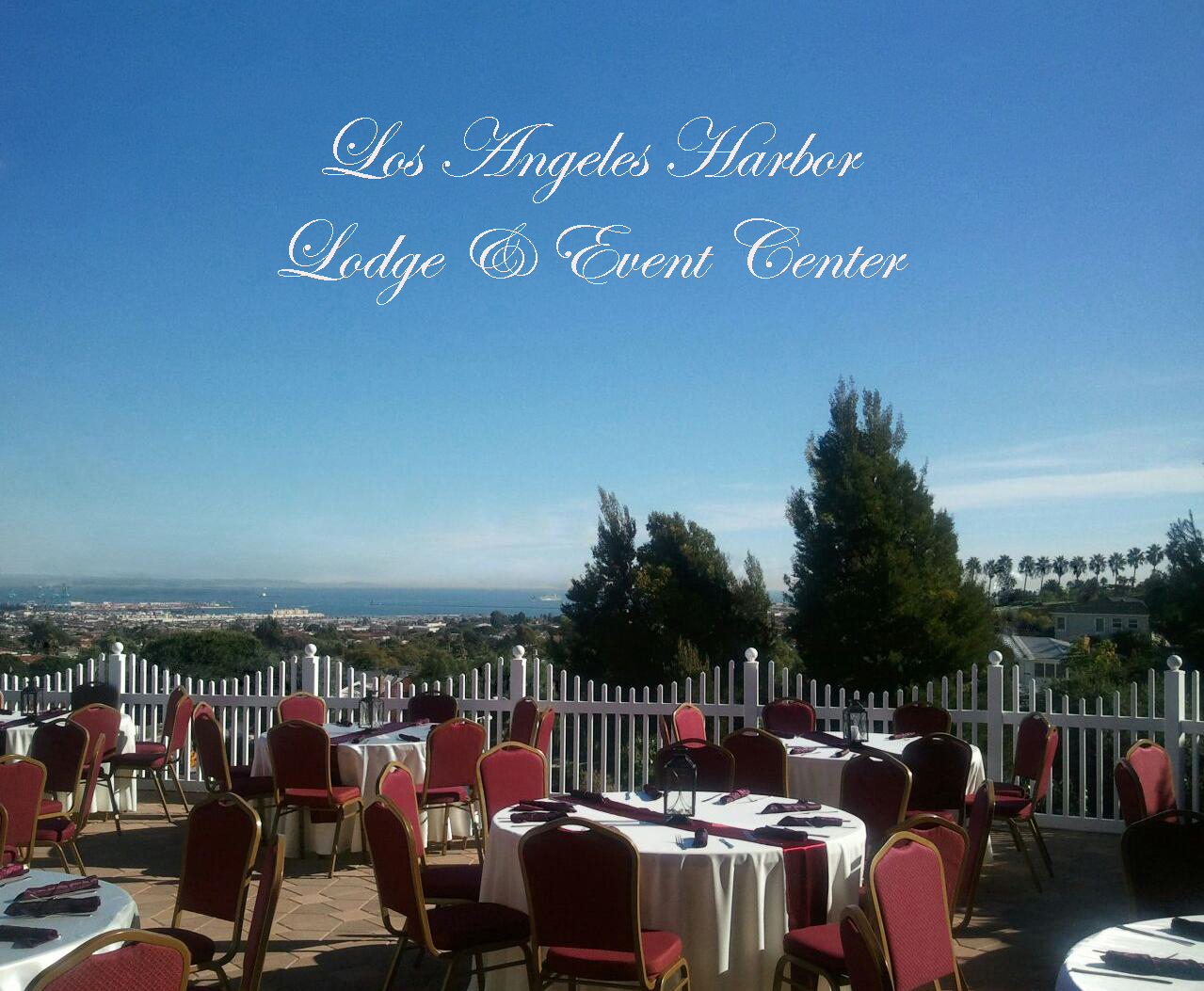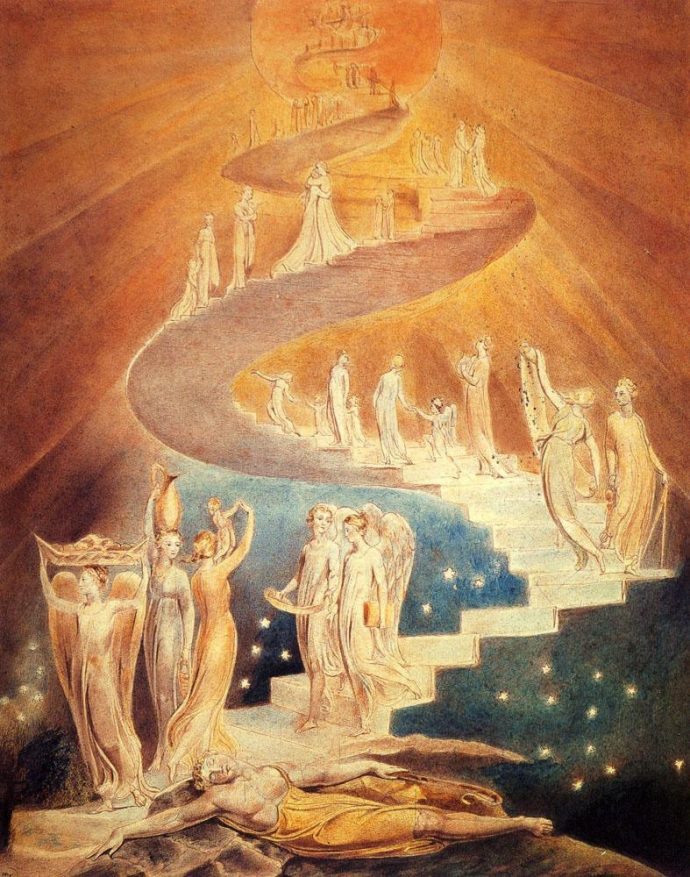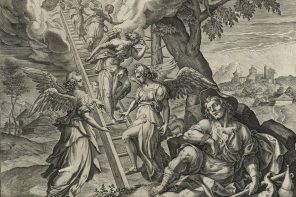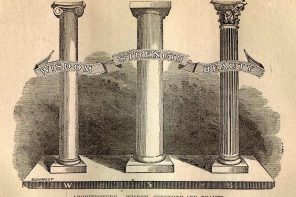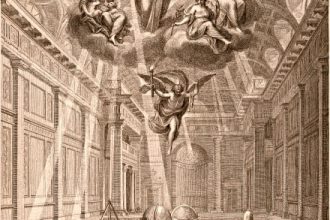I hold it truth with him who sings
To one clear Harp in divers tones
That men may rise on stepping stones
Of their dead selves to higher things.
– Alfred, Lord Tennyson
In these lines, the poet has expressed a fundamental Masonic teaching. What more vivid imagery could be used to illustrate the lesson of Hiram Abif’s legend than these words, especially the lines: “That men may rise on stepping stones / Of their dead selves to higher things”? Note the words dead and higher. What is the plain implication of these words of our text?
First, the old self must undergo death before the new self can take its place. This figure of regeneration is used not only in Freemasonry, but also in most of the ancient mysteries as well as in religions, ancient and modern. They all teach the virtue of “climbing” or rising in some manner above the conditions and circumstances in which we find ourselves at any given time. In Masonry (which is not, however, a religion) we find the same idea taught by the symbols of a Stairway and a Ladder. The Stairway plays a prominent part in the Fellowcraft Degree, as does the Ladder in the Entered Apprentice Degree.
Second, while there is no suggestion that there is anything phoenix-like in human development, the idea of self-immolation and self-sacrifice is a plain teaching of the Masonic Fraternity. Looking a little closer, we find that the individual is both the sacrifice and the sacrificer simultaneously. There is no suggestion that the process in his case resembles the incident of Abraham’s sacrifice of his son Isaac, nor is there the notion of anything like suicide. Indeed, the individual becomes a sort of High Priest who presides over the very act of sacrificing himself, as is implied here. In other words, we find ourselves by making of ourselves a sacrifice for others. And the human being is the only creature who can do this and for whom this can be done.
Third, there is the idea of ascent, that is, that we should climb ever higher and higher. There is no limit to our climbing or self-improvement except perfection itself. The essential thing is that we should keep climbing. This is the same idea expressed by Longfellow in his poem, Excelsior: “A youth who bore mid snow and ice / A banner with the strange device, Excelsior! Excelsior!”
Fourth, there is the inevitable law of life and death that everyone must reckon with. In one branch of Masonry, we are reminded of “Memento mori” (liberal translation, “We are born to die”). This motto appears in the meeting places of many European lodges. In Sweden occurs the variation: “No life without death: no death without life.” Here, then, is the inevitable teaching of the two greatest events in a human being’s experience. Further, there is no more reason to assume that death is final, any more than that life is so. Either conclusion is as much a product of human reasoning – logic – as is any other.
Fifth, there is no such thing as “pulling oneself up by one’s bootstraps.” The mental indulgence in this sort of rationalization is in reality incompatible with every teaching of Freemasonry. A few moments of reflection will demonstrate this fact.
The Winding Stairs in the Fellowcraft Degree lead us a part of the way up to the Light of Truth, but it remains for the ladder “extending from earth to heaven” in the Entered Apprentice Degree to show us the rest of the way. The latter is much more than a theological ladder. In former times the word theological meant not so much “religious” as “philosophical.” Note, too, that the ultimate aim of our climbing is heaven; our ascent is not made on a Tower of Babel. Our objective dare not be a smaller or lower one. This means that every Mason, to be worthy of his calling, must be a perfectionist.
We are told in the Great Light in Masonry that the citizenry of the Kingdom of Heaven consists of perfect beings, and this perfection is set for us: “Be ye therefore perfect, even as your Father which in heaven is perfect.” (Matthew 5:48) The citizen of the Kingdom is to be perfect himself; he cannot be the source of any imperfect thing. This injunction would be a hollow mockery if it pointed us to an unattainable goal. The Supreme Architect of the Universe does not make of Himself the promulgator of impossible! For the Mason, therefore, the motto is “Ne plus ultra,” “Nothing farther.”
In the Scottish Rite the first fourteen degrees constitute what is called the “Rite of Perfection.” The whole teaching of the Scottish Rite is the attainment of what we regard too often as unattainable. To rest content with shoddy work and piecemeal morals must be a thing of the past.
A Mason must give serious consideration to the moral judgments involved in questions such as these: the use of atomic bombs on civilians, whether in time of war or otherwise; a nation at peace maintaining strict censorship over its citizens; not giving financial support to charity when the individual is financially able; not taking the trouble to vote at elections; disbelieving in God; a doctor allowing a badly deformed baby to die when he could save its life but not cure its deformity; falsifying an income tax return; driving an automobile while drunk, but without accident; living on inherited wealth without attempting to render service to others; etc.
Are we justified in looking out for “No. 1,” without caring what happens to the rest of mankind? In saying “everybody’s doing it” as a reason (rationalization) for our doing the same thing? Is it really harmless to “get away with it” because no one sees or hears it?
Cutting corners in morals, religion, business, or other relationships is coming to be the more or less accepted standard of life and conduct. The saying that “we have to live with ourselves” means little except that we are willing to live with almost any kind of person.
Yet, in the face of all this, we have the uncompromising statement in Masonry’s Great Light: “Blessed are the pure in heart: for they shall see God.” (Matthew 5:8) Guilelessness has almost ceased to be a virtue worth mentioning; guile (nowadays often called “diplomacy” or “business acumen”) is the order of the day. Who will make us hold the torch high and demand of ourselves and others the highest standards of living and action?
It is not enough to wish for things or merely to plan to do them. Psychologists have a name for this sort of thing; they call it “wishful thinking” or “rationalizing.” Many persons who indulge in these to an excessive extent are said to be abnormal or mentally sick.
There is another thing that must not be overlooked. Kant had no corner on “categorical imperatives.” Freemasonry has at least one of them: self-improvement. This is obligatory and is no mere tinsel or window-dressing of Masonic ritual. A Mason is bound to better himself in spirit, mind, and body – always and in every way. If he slips from the pathway by saying or doing something that lowers him in his own and his fellowman’s estimation, he has derogated from his profession. It is not expected that he will be able to reach the pinnacle of perfection by himself, but the help of God is always abundantly available.
Consequently, we find that individual initiative and private enterprise are not enough. We have responsibility to the whole of human society. “…Masons are linked together by an indissoluble chain of sincere affection.” What is the purpose of this? “To relieve the distressed is a duty incumbent on all men, but particularly upon Masons … to soothe the unhappy, to sympathize with their misfortunes, to compassionate their miseries, and restore peace to their troubled minds, is the grand aim we have in view.” This is the ticket, so to speak, without which no passage is obtainable.
Dr. Charles G. Reigner in The Degrees of Masonry calls the Winding Stairs “the stairway of life.” He says:
The pathway of life is not a straight or level road on which we can travel without exertions. On the contrary, it is a ‘winding’ path. It is beset with difficulties that are the common lot of humanity. But for the thoughtful Mason, the road he travels, however steep or winding it may be, still leads onward to a higher sense of what life is and what it is meant to be.
Thus, the Winding Stairs become a symbol of the Mason’s mental and spiritual life and growth, of learning, study and enlarging horizons, of courage and Masonic character.
The late Carl H. Claudy wrote in his Pocket Encyclopedia of Masonic Symbols:
The Winding Stairs are the symbol of the realities of the Masonic career. A straight stair, a ladder, hides neither secret nor mystery at its top. But the stairs that wind hide each step from the climber; what is just around the corner is unknown. The Winding Stairs of life lead us to we know not what; for some, a Middle Chamber of fame and fortune; for others, of pain and frustration. The Angel of Death may stand with drawn sword on the very next step for anyone.
Yet man climbs because he has courage; because he has faith, because he is a man. So must the Freemason climb. The Winding Stairs do lead somewhere. There is a Middle Chamber. There are wages of the Fellowcraft to be earned. But the objective of all our striving must not be lost sight of. For the purpose of our climbing is the “starry-decked heavens where all good Masons hope at last to arrive:” Wages as such are not vouchsafed here, for the reward is the ultimate one of heaven itself. Is there any greater? It is the Supreme Architect of the Universe, who gives His final approval in the “Well done, good and faithful servant.” (Matthew 25:23)
There is the further thought that “the three principal rounds of the ladder are faith, hope, and charity.” Perhaps we should also note that these are not the only rounds of the ladder – all the Masonic virtues are likewise to be made the objects of our endeavors. There are kindliness, honor, liberty of both conscience and body, righteousness, wisdom, loving-kindness, patience, fidelity, trust, manhood, gentleness, humility, and a host of others, all of which enter into the make-up of what we call human character.
One further observation may be worth mentioning here. The word ladder in the Greek language is climax. The word means “the highest point,” or the “point of greatest interest,” “the summit.” There is always the notion of “going up,” of “ascending”; and the end is at the top, not at some point at a lower level.
Again we turn to Claudy’s Pocket Encyclopedia of Masonic Symbols:
The revised edition of the Bible reads “love” in place of “charity,” which makes the Masonic ritual of Jacob’s ladder more understandable. That “charity extends beyond the grave through the boundless realms of eternity” seems an overstatement, if charity is thought of in terms of putting a ten cent piece in a blind beggar’s cup. But if it is “love” which extends through eternity, the conception is at once beautiful and Masonic, since brotherly love is one of the great teachings of Masonry.
One further admonition must be mentioned. Beware of frustrations, barriers, and detours on your progress through Masonry. The Fraternity does not guarantee to eliminate or to overcome these obstacles for the zealous and industrious brother. He himself must assume this responsibility.
The Entered Apprentice is admonished that he is to erect his “future moral and Masonic edifice” on certain tenets, virtues, and principles. Without them he cannot build; he is like the man building his house upon the sand instead of upon the rock.
We find, then, that we are all face to face with the inevitable necessity of making our choice between the sand and the rock as our foundation. As one recent writer said: “We are the first people in human history to possess the power of total self-destruction:” Actually, as never before, Masonry finds among its more serious obligations, the demonstrating of the correct answer to this dilemma. In the proper ascent of the Stairway and the Ladder, materially, mentally, and spiritually, and in arriving at the summit, we shall become Masons worthy of the name!
On the campus of Williams College in Massachusetts stand the “Hopkins Memorial Steps.” They were erected in memory of Mark and Albert Hopkins, two famous educators of the last century. Mark Hopkins was the brother who became President of William College and of whom it was said, “Mark Hopkins sitting on one end of a log and a boy on the other constitute a university.”
Supposed to have been written by Professor Albert Hopkins, the other brother, these lines were placed on the Memorial Steps after having been found among his papers after his death:
Climb high;
Climb far,
Your goal the sky,
Your aim the star.
Can anyone – Mason or profane – have a finer or greater theme for his life?
by William Moseley Brown, PGM
Reprinted by kind permission from the Southern California Research Lodge’s “Fraternal Review.”
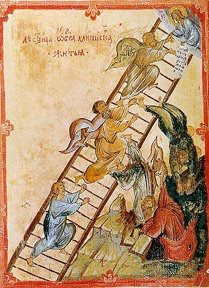
The author was a Past Grand Master of The Grand Lodge of Virginia in 1934 and Masonic author. He was a member of the Scottish Rite, the York Rite, the Shrine, and an Honorary Member of the Supreme Council, 33rd Degree. He belonged to a number of Lodges around the world and has been honored by an number of Grand Lodges.
He served in both World War I and World War II. In 1945, he served as military governor of Weimar, Germany, during which time he was commander of the Buchenwald Concentration Camp after it was liberated from the Germans. Brown ran for Governor of Virginia, and in 1932, he was a candidate for the United States House of Representatives.
He was a faculty member of Columbia University, Washington and Lee University (teaching, at different times, German, Biology, Education and Psychology, and also serving as psychological examiner and director of vocational guidance for seven years), University of Virginia, George Washington University, University of Guadalajara, Mexico and Elon College, North Carolina (as Professor of Social Sciences). He also served as president of Atlantic University, president of the Virginia Academy of Science and president of the Association of Virginia Colleges.
